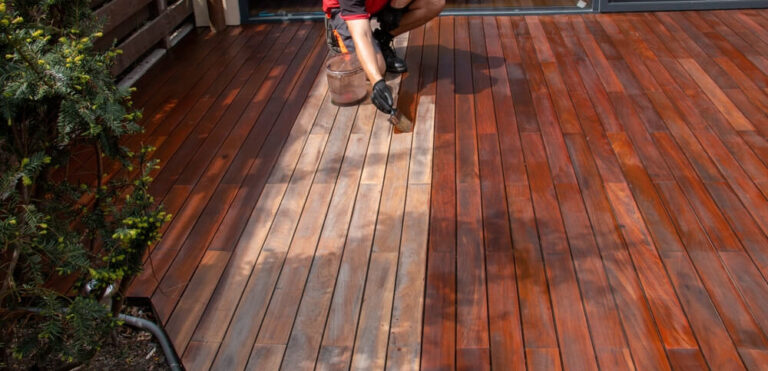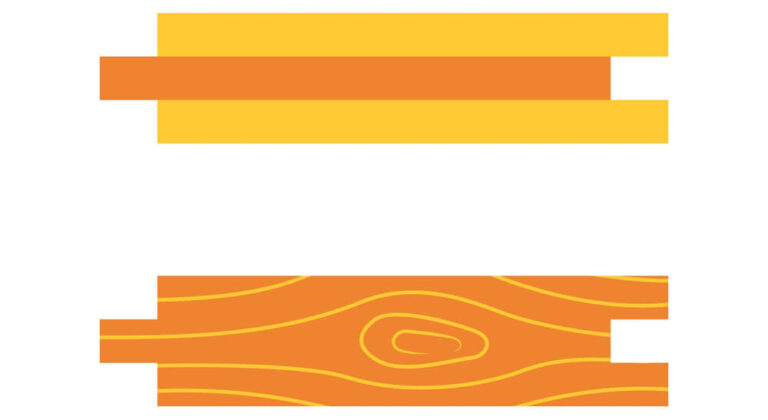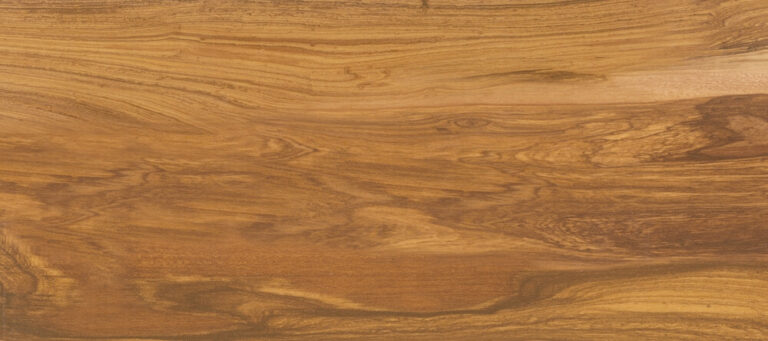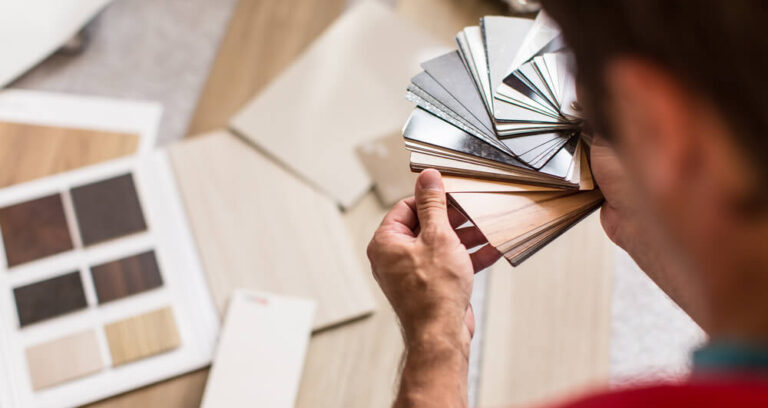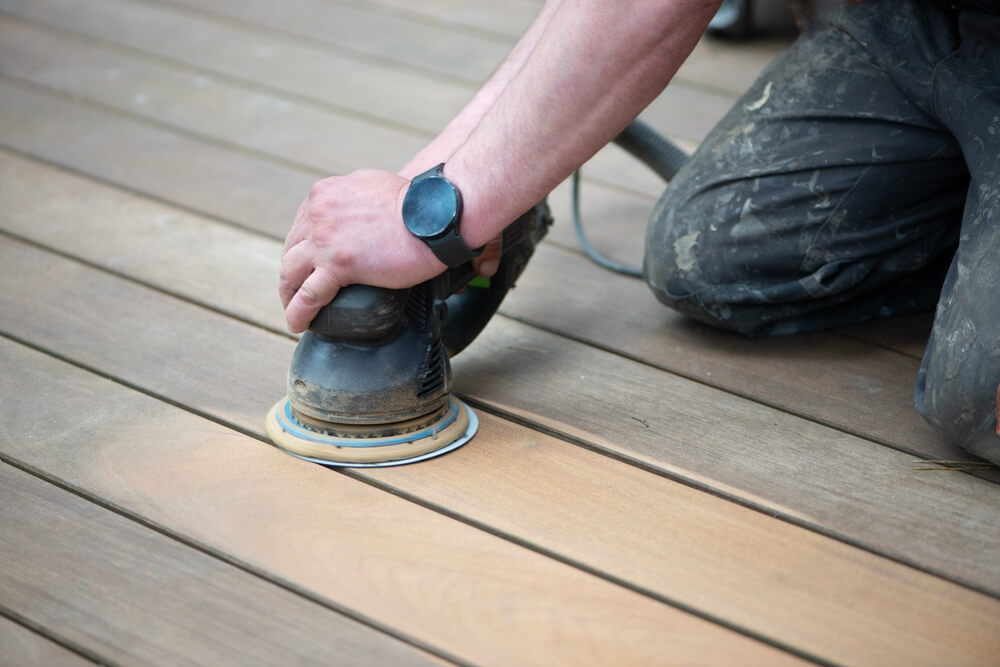
Hardwood floors give a unique beauty home, but over time, they may show signs of wear and tear. When faced with a worn-out hardwood floor, homeowners look for the best possible solution to revive them. The most common options to restore them are hardwood floor resurfacing vs refinishing.
Hardwood floor resurfacing involves removing a thin layer to address minor damage, suitable for surface issues. Refinishing is a more extensive process, including sanding the entire floor, ideal for moderate to severe damage. Resurfacing is quicker and cost-effective, while refinishing provides a durable, transformative result, albeit requiring more time and expense.
Being hardwood flooring experts, we will explore the differences between hardwood floor resurfacing and refinishing to help you make an informed decision about the best solution for your flooring needs. Before moving into the differences, let’s have a look at basics of these process:
What Does Resurfacing Hardwood Floors Mean?
Hardwood floor resurfacing is a process that involves the removal of a thin layer from the surface of the wood, usually through sanding or abrasive techniques. It is suitable for minor scratches, surface imperfections, and light wear. It eliminates superficial damage and reveals a fresh layer of wood beneath the surface.
Hardwood floor resurfacing is a relatively quick and cost-effective solution. It also depends on the thickness of the hardwood wear layer, making it particularly suitable for floors with a sufficient amount of wood to withstand the removal of a thin surface layer.
What Is Hardwood Floor Refinishing?
Hardwood floors refinishing is a comprehensive process that involves sanding down the entire surface of the floor to remove the existing finish, scratches, dents, stains, and any other imperfections. It is a more involved and time-consuming procedure compared to resurfacing, but it offers a transformative result.
Refinishing process typically includes multiple stages, such as coarse sanding to remove the old finish, intermediate sanding to smooth out imperfections, and fine sanding to achieve a polished and even surface. Staining can be applied if you want to change the color of hardwood floors, followed by the application of a protective finish, such as polyurethane. This final layer not only enhances the aesthetic appeal of the hardwood but also serves as a durable shield against future wear and tear.
Hardwood Floor Resurfacing Vs Refinishing – Know The Differences

Given below are some of the factors on which selection of the process depends. These are some of the major differences between hardwood floor resurfacing vs refinishing:
Degree of Damage
Resurfacing is ideal for floors with light surface damage or minor scratches. It is not suitable for deep gouges or widespread wear. It works similar to buffing that removes minor scratches.
Refinishing is suitable for floors with moderate to severe damage, including deep scratches, dents, and worn-out finishes. Refinishing is a more intensive process that can address a wide range of issues.
Thickness of the Wood
Since resurfacing involves removing only a thin layer, it is more suitable for hardwood floors with a thicker wear layer. This process is not recommended for thin veneer or engineered hardwood floors.
Refinishing is a more versatile option that can be applied to various thicknesses of hardwood. It allows for more aggressive sanding if necessary, making it suitable for a broader range of flooring types.
Time
Resurfacing is a quicker process compared to refinishing. It involves less sanding and typically has a shorter downtime, making it a convenient option for those looking to rejuvenate their floors with minimal disruption.
Refinishing is a more time-consuming process due to the extensive sanding involved. It may require several days for the floor to be sanded, stained (if desired), and coated with a new finish. Homeowners should be prepared for longer project durations.
Cost
Resurfacing is a more cost-effective option since it involves less labor and material. It is an excellent choice for budget-conscious homeowners looking to refresh their floors without a significant investment.
Refinishing hardwood floors cost tends to be a bit higher due to the additional labor and materials required for sanding and applying a new finish. However, it provides a more thorough and transformative result.
Longevity and Durability
Resurfacing can improve the appearance of the hardwood floor, it may not provide the same level of durability as refinishing. The longevity of the results depends on the depth of the surface damage and the quality of the finish applied.
Refinishing offers a more durable and make hardwood floor last longer. The removal of the existing finish and the application of a new one provide a fresh protective layer, making the floor more resilient to future wear and tear.
Environmental Impact
Resurfacing generally generates less waste and requires fewer resources compared to refinishing, making it a more environmentally friendly option.
The sanding process in refinishing creates more dust and waste, and the use of new finishes may have environmental implications. Homeowners concerned about sustainability should consider the ecological impact of refinishing.
Hardwood Floor Resurfacing Vs Refinishing Pros And Cons
Hardwood Floor Resurfacing
Pros
Cost-Effective: Generally more affordable than refinishing.
Quick Turnaround: Faster process with less downtime.
Environmental Impact: Generates less waste, more eco-friendly.
Cons
Surface-Level Improvement: Limited to addressing minor surface issues.
Not for Deep Damage: Unsuitable for floors with extensive damage.
Also Read: Hardwood floor sanders
Hardwood Floor Refinishing
Pros
Comprehensive Restoration: Addresses deep scratches, stains, and imperfections.
Durable Finish: Provides a long-lasting protective layer for the wood.
Customization: Offers the option to change color through staining.
Cons
Higher Cost: Generally more expensive due to extensive labor and materials.
Time-Consuming: Requires more time for sanding, staining, and applying finish.
Environmental Impact: Generates more waste and dust, potentially less eco-friendly.
FAQs
Is It Better To Refinish Or Restore Hardwood Floors?
Refinishing is often better for deep damage, providing a comprehensive overhaul. Restoration, typically involving cleaning and minor repairs, suits floors with light wear, maintaining their original character.
How Often Should Wood Floors Be Resurfaced?
Wood floors generally need resurfacing every 7-10 years, but the frequency depends on foot traffic, wear, and maintenance. Regular cleaning and protective measures can extend the time between resurfacing.
When Should You Not Refinish Hardwood Floors?
Avoid refinishing if the floor has irreparable structural damage, extensive rot, or if it has been refinished multiple times, risking the removal of too much wood. In such cases, replacement may be more suitable.
Does Refinishing Hardwood Floors Really Make Them New Again?
Yes, refinishing hardwood floors can make them look and feel new again. By sanding away imperfections, stains, and applying a fresh finish, the process restores the original beauty of the wood, providing a revitalized and durable surface.
How Long Does It Take To Resurface Hardwood Floors?
Resurfacing hardwood floors typically takes 1-3 days, depending on the size of the area, the extent of the damage, and the specific processes involved. Resurfacing is generally quicker than refinishing due to its less invasive nature.
How Do I Know If My Hardwood Floors Need Refinishing?
Look for signs like deep scratches, worn finishes, or discoloration. The water droplet test can reveal whether the wood absorbs liquid, indicating a weakened finish. If routine cleaning and minor repairs no longer suffice, it’s likely time for refinishing.
How To Restore Hardwood Floors Without Sanding?
Restoring hardwood floors without sanding involves cleaning, repairing minor damages, and applying a new finish. Use a deep cleaning solution, spot treat scratches, and choose a compatible finish for a refreshed look without the need for sanding.
Conclusion
Choosing between hardwood floor resurfacing and refinishing depends on various factors, including the degree of damage, budget constraints, and the desired outcome. Resurfacing is a quick and cost-effective solution for minor surface issues, while refinishing offers a more comprehensive and durable transformation for heavily damaged floors. Ultimately, homeowners should assess their specific needs and consult with flooring professionals to determine the most suitable option for achieving a beautiful and rejuvenated hardwood floor.

